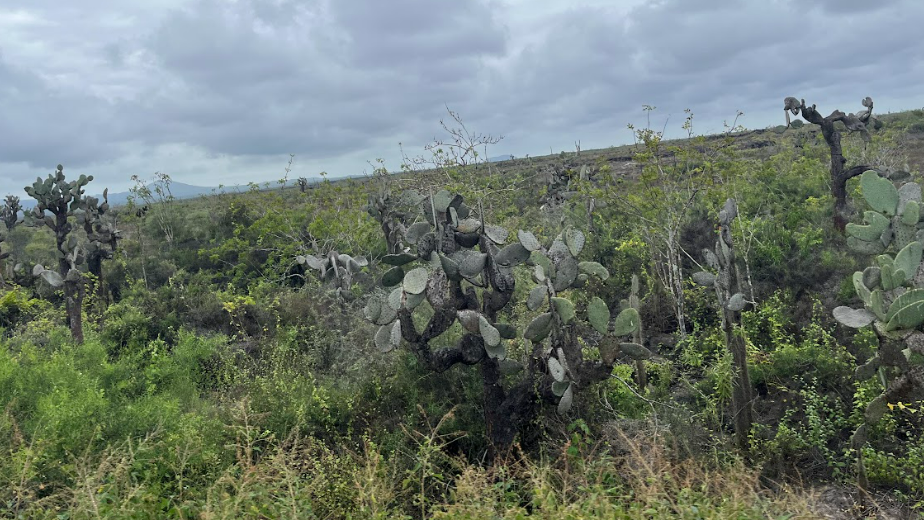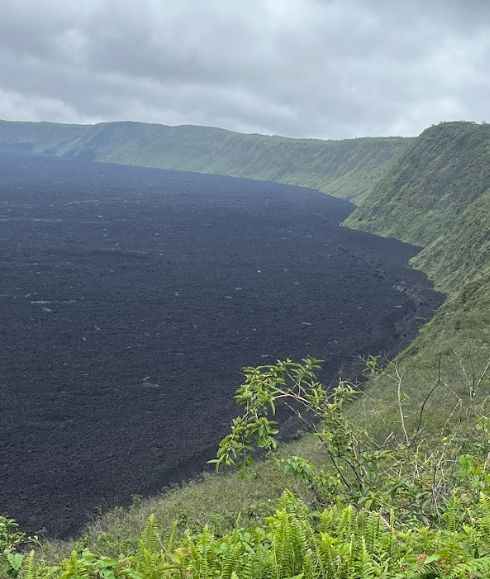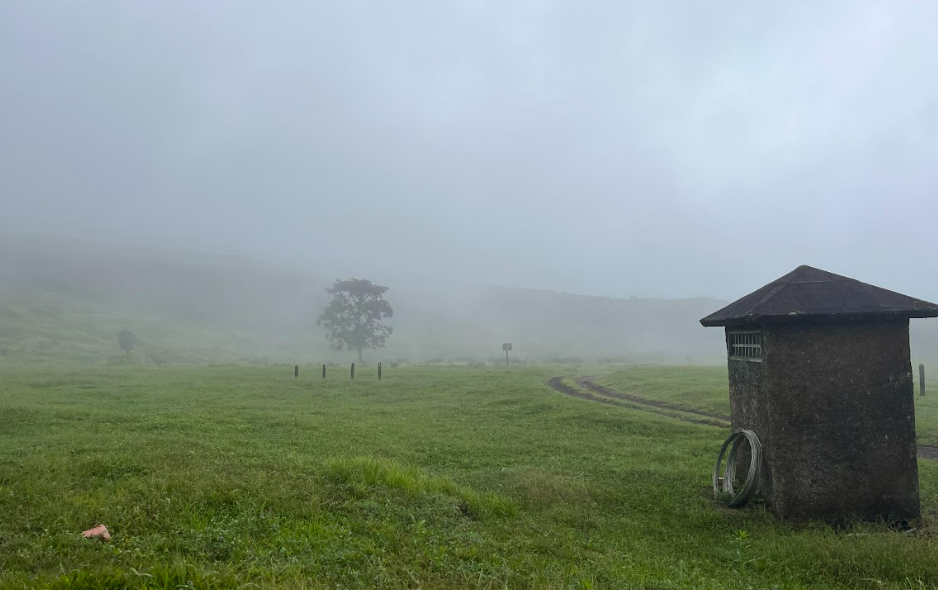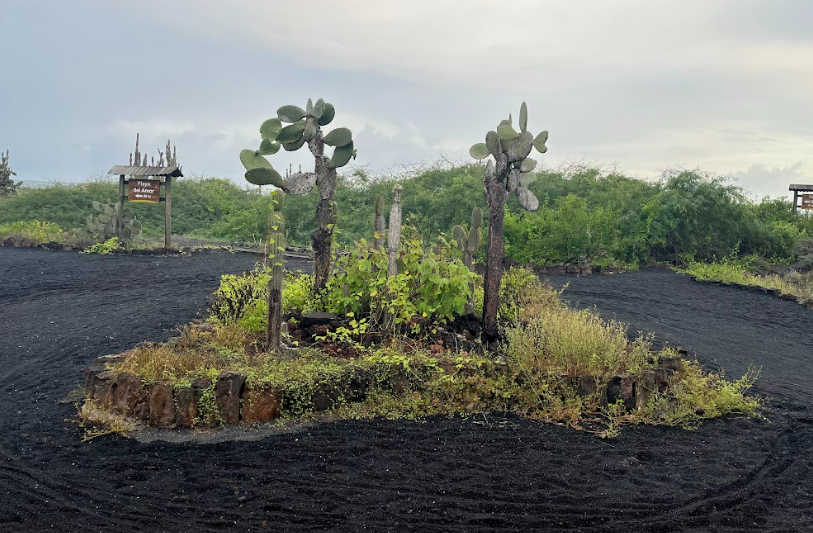Hello again! Once again, my name is Evan Kraft. I’m a soon-to- be 5th year Entomology major at UGA and continuing on from last time, I’ll be talking about my second day on Isabela Island.

Waking up bright and early for a short breakfast, the day really began with the arrival of our chiva. Our destination was one of the most active volcanos of the Galapagos, the Sierra Negra. It had quite the history behind it, seeing how it had last erupted in 2018, and as such, I was very excited. Since were staying in the town of Puerto Villamil, in order to get there, we had to file into our tour vehicle and ride out for around an hour through hot, arid shrublands. One thing that was surprising to me was after a while, the rocky, craggy terrain we had been driving past for the last hour slowly started giving way into trees and lush grassy fields. With how active the volcano was, it actually provides a whole lot of nutrients to the area surrounding it and as such it has been used by Puerto Villamil as farmland for decades. Technically, this did inadvertently introduce many new species into the area, but through eradication efforts, the damage caused by this has slowly been alleviated.


Upon arriving, our guide explained some of the history of the volcano as well as the route we would be taking to reach the rim of the caldera. The hike was honestly not that bad, and, when compared to many of the trails at Maquipucuna, was very straight forward. On our way, we got to see a very brightly colored vermilion fly catcher who was nice enough to stand still for us to take pictures. Sadly, that was about it in terms of interesting wildlife we encountered.



Eventually, we did reach the top, and the view of the caldera from up there was mind blowing. It was HUGE! Like to me, it seemed like it was the same size of a small town. And with its rain-shadow effect, we were able to watch the clouds continuously spill over against the side of the basin. We actually had our lunch at the top with a nice view of it in the background at one of the picnic areas that was set up for visitors. Once we finished eating, we began our decent down and by now it had started sprinkling. Thankfully, after a long hike, the moisture in the air felt nice and upon reaching the bottom, we were greeted by a thick layer of fog. After everyone made it down, we headed back into town for our one free afternoon.

With a few hours to kill before we had to meet back up for biking later that evening, I decided that I wanted to go back to the cove we had snorkeled at the day prior. I had brought my own equipment with me and after a short 15 min walk, I was at the beach. While snorkeling as a group can be fun, being on your own is a whole different experience. While you have less coverage for spotting things in the water, you don’t have to deal with other people potentially disturbing the animals or causing a commotion. Most of all, I didn’t have to worry about accidently being kicked in the face. I saw a majority of the stuff we encountered the day prior. Trumpet fish and the yellowtail surgeonfish being two of my personal favorites. They were plentiful in the high tide, but the biggest highlight of that session was seeing a massive basketball sized pufferfish just going about his day.
Returning back, I did run into some trouble. Each hotel room only had one key and while I know for a fact that I placed it into my pocket after I had finished snorkeling, somehow on the trip back it disappeared. I searched the road twice to no avail and so the rest of our stay in Isabella, me and my roommate had to ask to be let in our room for the remained of our time there. It wasn’t too big of an issue and I did pay for the replacement key, but it did well to remind me to be mindful of my possessions, lest I lose something important like my passport or wallet. Otherwise, after a refreshing shower, we made our way to an early dinner of even more sushi before heading to a bike rental place.
It had been a long time since I had been on a bike, but in order to reach the flamingo ponds and tortoise breeding center, we needed something that was a little faster than walking, especially if it used less energy. The flamingos were cool, and similar to the penguins of yesterday, it was surreal seeing them just out an about in the wild. They didn’t do much but they didn’t need to either. They were being pestered by the ducks in the water quite a bit though. Right next to that was the tortoise conservation & breeding facility. We would end up seeing a bigger one Santa Cruz but this one had a lot less people so we were really able to explore it at our own pace.

We ended the day with a visit to the mangroves along the beach, but by now, many of the other students had decided to call it early as it had started to rain again. The trails were well kept and the mangroves themselves were huge with some of them as wide as we were tall. On one of the trails, we even had to duck underneath the roots of one to continue onto the path ahead. It was a high tide by this point, and with low tide being the premier time to visit, there was some difficulty as some of the paths closest to the shore were beginning to flood. I personally didn’t get to finish the last trail because of the fact that I would have had to go through the water in hiking boots, but given how great the rest of the day way, I didn’t mind mission out on some small part of it. There was still plenty more to come the next day, but you can read all about that in part 3.
